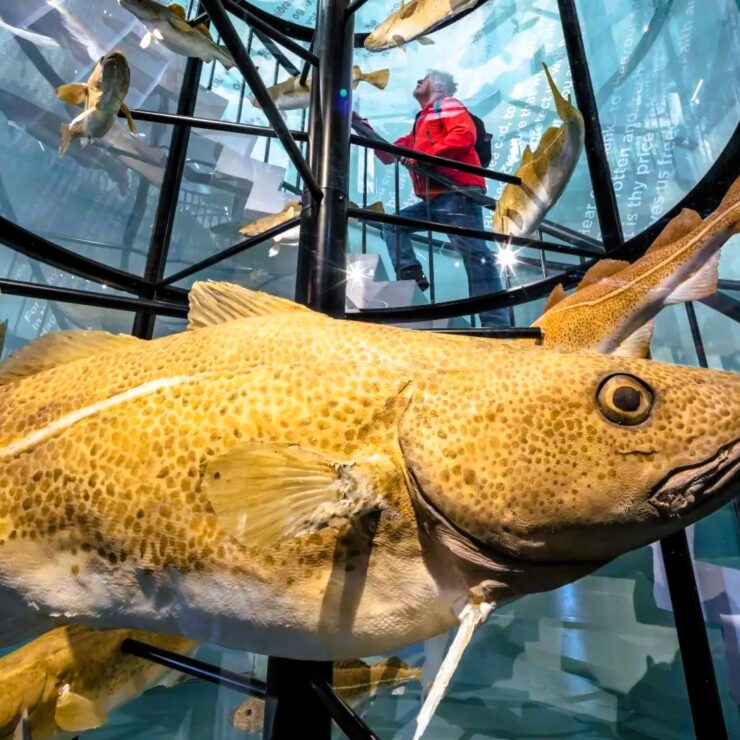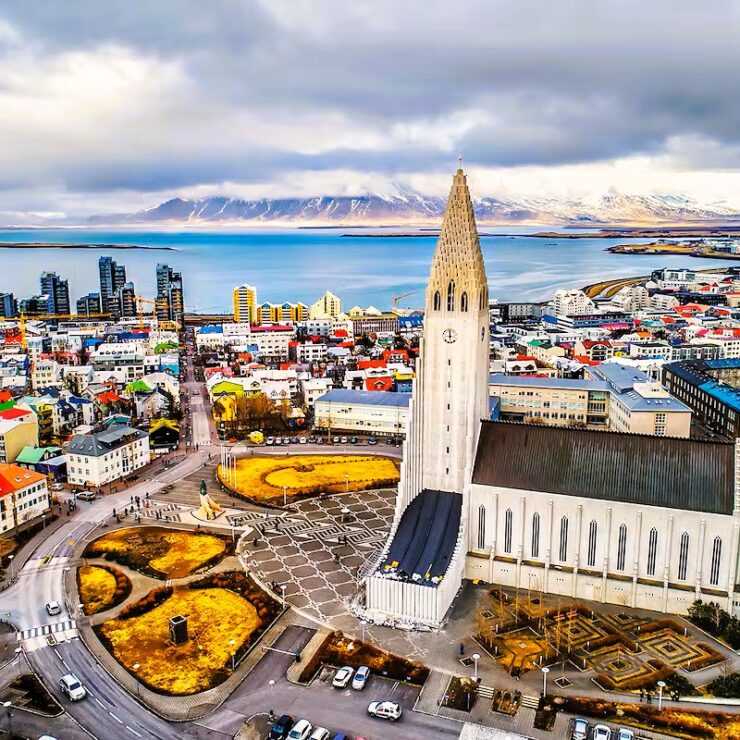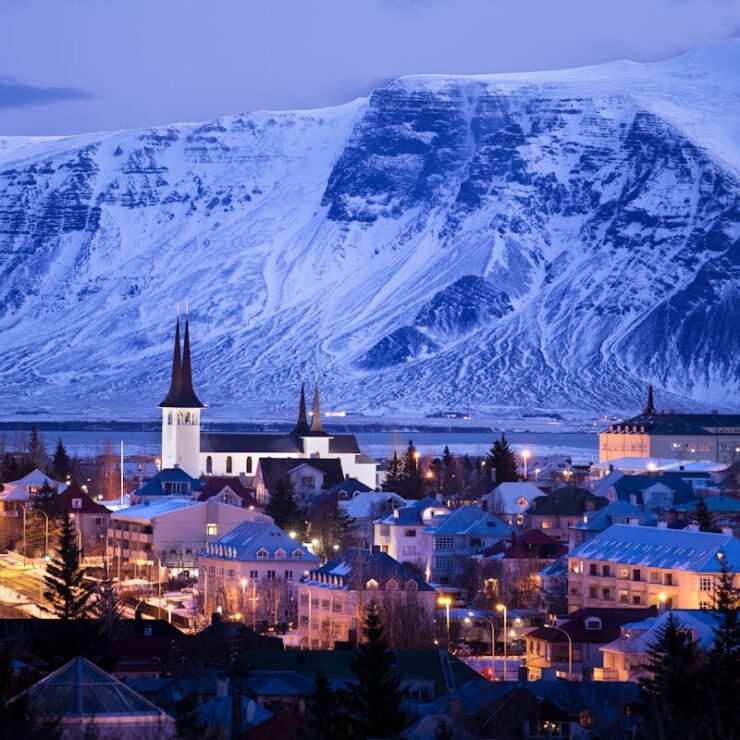Welcome to Reykjavík, Iceland’s charming and compact capital, where the blend of urban life and stunning natural surroundings makes it a delight to explore. Whether you’re here to marvel at iconic landmarks like Hallgrímskirkja, soak in geothermal pools, or use the city as a base for day trips to the Golden Circle, getting around Reykjavík is surprisingly straightforward. Despite its small size—with a population of just over 130,000 and a downtown area you can cross on foot in under an hour—Reykjavík offers a variety of transport options to suit every traveler’s needs. In this detailed guide, I’ll break down the best ways to navigate the city, from walking and public buses to biking, taxis, and car rentals, with practical tips to help you move around efficiently and enjoyably. Let’s make your journey through Reykjavík as smooth as an Icelandic glacier!
Why Reykjavík is Easy to Navigate
Reykjavík is one of the most walkable capital cities in the world, with most major attractions like Harpa, Laugavegur shopping street, and Tjörnin Lake clustered within a 2–3 km radius in the downtown area (often referred to as the 101 district). The city’s layout is intuitive, with well-maintained sidewalks, clear signage (often in English), and a safe, pedestrian-friendly vibe. For destinations farther afield—such as suburban geothermal pools or museums like Árbær Open Air Museum—public transport and other options are readily available. Plus, Icelanders are known for their helpfulness, so don’t hesitate to ask for directions if needed. Let’s explore your transport choices in detail.
1. Walking: The Best Way to Soak in Reykjavík
- Why Choose It: Walking is hands-down the most popular and practical way to explore central Reykjavík. The city’s compact size means you can reach key sights like Hallgrímskirkja, the Old Harbour, and the Sun Voyager within 10–20 minutes of each other. Plus, strolling lets you appreciate the colorful houses, street art, and scenic views of Mount Esja across the bay.
- Best For: Downtown attractions, short distances (under 2 km), and leisurely sightseeing.
- Reflejos: Walk along Laugavegur, the main shopping street, to browse boutiques and cafés. Take a loop around Tjörnin Lake for a peaceful break. Wander to the Old Harbour for whale-watching tours or fresh seafood.
- Practical Tips:
- Wear sturdy, waterproof shoes with good grip—Iceland’s weather can turn sidewalks wet or icy, especially in winter.
- Dress in layers and carry a windproof jacket; Reykjavík’s coastal location means sudden gusts are common.
- Use offline maps like Google Maps or Maps.me for navigation, though the city grid is easy to follow.
- Most pedestrian crossings have signals, and drivers are courteous, but always look both ways.
- Cost: Free!
- Time Considerations: Walking between major downtown sights takes 5–20 minutes. For example, from Hallgrímskirkja to Harpa is about a 15-minute walk (1.2 km).
- Accesibilidad: Sidewalks are generally well-maintained and wheelchair-friendly in central areas, though some older streets may have uneven cobblestones. Check specific routes if mobility is a concern.
2. Public Buses (Strætó): Affordable and Reliable
- Why Choose It: For destinations beyond walking distance—such as Perlan, Laugardalslaug geothermal pool, or Árbær Open Air Museum—Reykjavík’s public bus system, operated by Strætó, is an efficient and budget-friendly option. Buses cover the city and its suburbs, with routes extending to nearby towns like Kópavogur if you’re venturing out.
- Best For: Longer distances within Reykjavík (2–10 km), suburban attractions, or when weather makes walking unpleasant.
- How It Works:
- Routes: Key hubs include Hlemmur (a central transfer point near Laugavegur) and Lækjartorg (near the Old Harbour). Popular routes for tourists include Line 1 (downtown to Hlemmur), Line 14 (Old Harbour to Grandi area), and Line 5 (to Laugardalur Valley).
- Schedule: Buses run from around 6:30 AM to midnight on weekdays, with reduced frequency on weekends. Most routes operate every 15–30 minutes. Check schedules on the Strætó website (straeto.is) or download their app for real-time updates.
- Fares: A single fare is 490 ISK ($3.50 USD) for adults, payable by card or exact cash (drivers don’t give change). A 1-day pass (1,900 ISK or $14 USD) or 3-day pass (4,700 ISK or $34 USD) offers better value for multiple trips. The Klapp app lets you buy digital tickets easily.
- Reflejos: Buses are clean, modern, and often equipped with Wi-Fi. They’re a great way to see everyday Icelandic life—think locals heading to work or school.
- Practical Tips:
- Board at the front and pay or show your ticket/pass to the driver. Exit through the back doors.
- Stops are announced in Icelandic and sometimes English; use the Strætó app or Google Maps to track your stop.
- Major stops like Hlemmur have shelters, but smaller ones may not, so dress for the weather while waiting.
- Cost: $3.50–$34 USD depending on ticket type.
- Time Considerations: A bus ride across downtown (e.g., Hlemmur to Lækjartorg) takes 5–10 minutes; suburban trips (e.g., downtown to Laugardalslaug) take 15–25 minutes.
- Accesibilidad: Most buses are low-floor with ramps for wheelchairs, and priority seating is available. Check straeto.is for accessibility details on specific routes.
3. Biking: Eco-Friendly and Scenic
- Why Choose It: Biking is a fantastic way to cover more ground than walking while enjoying Reykjavík’s fresh air and coastal paths. The city has dedicated bike lanes along major roads and scenic routes like the Sculpture & Shore Walk near the Old Harbour.
- Best For: Moderate distances (2–5 km), sunny days, and exploring areas like the harbor or Elliðaárdalur Valley (a green space with trails).
- How It Works:
- Rentals: Bike rental shops like Reykjavík Bike Tours (near the Old Harbour) offer hourly or daily rentals starting at 3,500 ISK ($25 USD) per day. Some hostels and hotels, including those in the 101 district, also provide bikes.
- E-Bikes: Electric bike rentals are available for an easier ride, especially on hilly areas like around Hallgrímskirkja, costing around 5,000 ISK ($36 USD) per day.
- Shared Bikes: Look for services like WOW Citybike, a bike-sharing system with stations around downtown (download their app for access; rates start at 500 ISK or $3.50 USD for 30 minutes).
- Reflejos: Cycle along the seaside path from Harpa to the Sun Voyager for stunning ocean views. Bike to Grotta Lighthouse (about 5 km from downtown) for a quiet escape and potential Northern Lights spotting in winter.
- Practical Tips:
- Helmets are often included with rentals and recommended for safety.
- Stick to bike lanes or shared paths; traffic is light, but be cautious at intersections.
- Summer (June–August) is ideal for biking with long daylight hours; winter biking is possible but challenging due to ice and wind—opt for studded tires if available.
- Cost: $3.50–$36 USD depending on rental type and duration.
- Time Considerations: Biking cuts walking times in half; for example, Hallgrímskirkja to the Old Harbour takes about 5–7 minutes by bike versus 15 minutes on foot.
- Accesibilidad: Biking is less suitable for those with mobility issues, though e-bikes can help with hills. Paths are generally flat and well-paved in central areas.
4. Taxis and Ride-Sharing: Convenient but Pricey
- Why Choose It: Taxis are a quick, comfortable option for short hops or late-night returns when buses aren’t running or walking feels unsafe. They’re also handy if you’re carrying luggage or heading to the airport.
- Best For: Short trips, bad weather, late hours, or travelers with limited mobility.
- How It Works:
- Taxis: Licensed taxis are available at stands (e.g., near Hallgrímskirkja or Lækjartorg) or by phone. Major companies include Hreyfill (tel: +354 588 5522) and BSR (tel: +354 561 0000). Fares start at 800 ISK ($6 USD) with a per-kilometer rate of about 300 ISK ($2.20 USD).
- Ride-Sharing: Uber and Lyft don’t operate in Iceland, but local apps like Hreyfill’s booking app offer similar convenience for ordering rides.
- Reflejos: Taxis are reliable for quick trips, like from downtown to Perlan (about 2 km, costing $10–$15 USD) or to Keflavík International Airport (45 km, around $120–$150 USD, though airport shuttles are cheaper—see below).
- Practical Tips:
- Taxis accept credit cards, but confirm with the driver. Tipping isn’t expected.
- Fares are metered and regulated, but they’re expensive compared to other options, so use sparingly.
- Book in advance during peak tourist seasons (summer and winter holidays) or for early morning airport runs.
- Cost: $6–$150 USD depending on distance.
- Time Considerations: A downtown trip (1–3 km) takes 5–10 minutes; airport trips take 40–50 minutes.
- Accesibilidad: Many taxis can accommodate wheelchairs if requested in advance; specify needs when booking.
5. Car Rental: Flexibility for City and Beyond
- Why Choose It: Renting a car gives you freedom to explore Reykjavík at your own pace and venture outside the city to places like the Blue Lagoon or Golden Circle. Within Reykjavík, it’s less necessary due to the city’s walkability and parking challenges, but it’s ideal for day trips.
- Best For: Travelers planning excursions beyond Reykjavík or those who prefer driving over public transport for suburban sights.
- How It Works:
- Rentals: Companies like Hertz, Avis, and local firms like Blue Car Rental operate in Reykjavík and at Keflavík International Airport. Prices start at 7,000 ISK ($50 USD) per day for a compact car, higher in peak season (June–August).
- Parking: Downtown parking is limited and often paid (500–600 ISK or $3.50–$4.50 USD per hour via apps like Parka or EasyPark). Look for blue “P” signs for zones; free parking is more common in suburbs.
- Rules: Drive on the right, follow speed limits (30–50 km/h or 18–31 mph in the city), and never drink and drive—penalties are severe.
- Reflejos: Drive to outlying spots like Grotta Lighthouse or Elliðaárdalur Valley for nature without relying on tours. Use Reykjavík as a base for iconic road trips.
- Practical Tips:
- A standard driver’s license from most countries is valid; no International Driving Permit needed unless your license isn’t in Roman script.
- Winter driving (November–March) requires caution due to ice and limited daylight; opt for a 4×4 if possible.
- Gas stations are plentiful; fuel costs about 300 ISK ($2.20 USD) per liter.
- Cost: $50+ USD per day plus fuel and parking fees.
- Time Considerations: Driving within Reykjavík is quick (5–15 minutes across downtown), but traffic can slow during rush hours (7–9 AM, 4–6 PM).
- Accesibilidad: Cars offer flexibility for those with mobility issues, but parking near attractions may still require short walks.
6. Airport Transfers: Getting to/from Keflavík International Airport (KEF)
- Why It Matters: Keflavík International Airport is 50 km (31 miles) from Reykjavík, about a 45-minute drive, so planning your transfer is key.
- Options:
- Airport Shuttles: Flybus and Airport Express offer direct service between KEF and Reykjavík (BSÍ Bus Terminal or hotel drop-offs). Tickets cost 3,000–4,000 ISK ($22–$29 USD) one-way, bookable online or at the airport. Shuttles align with flight schedules, running 24/7.
- Taxis: Expensive at 16,000–20,000 ISK ($115–$145 USD) one-way; best for groups splitting the cost or late-night arrivals without shuttle options.
- Car Rental: Pick up a rental at KEF for flexibility; ideal if planning road trips right away.
- Public Bus: Strætó Line 55 connects KEF to Reykjavík (BSÍ Terminal) for 1,960 ISK ($14 USD), but it’s less frequent and takes longer (1.5 hours).
- Practical Tips:
- Book shuttle tickets in advance, especially during peak seasons. Flybus offers Wi-Fi and comfy seats.
- Shuttles drop off at BSÍ Terminal (near downtown); add a hotel transfer for an extra fee if needed.
- Allow extra time in winter for potential weather delays on the road.
- Cost: $14–$145 USD depending on method.
- Time Considerations: Shuttles and taxis take 45–50 minutes; public bus takes 1.5 hours.
Practical Tips for Getting Around Reykjavík
- Weather Preparedness: Reykjavík’s weather changes fast—rain, wind, and snow can impact travel plans. Always check forecasts (try vedur.is) and carry waterproof gear. Winter (November–March) means shorter daylight (4–6 hours), so plan transport for early darkness.
- Momento: Summer (June–August) offers nearly 24-hour daylight, ideal for walking or biking late. Winter requires tighter schedules due to limited light and potential bus delays from snow.
- Presupuesto: Walking and buses are the cheapest options. Taxis and car rentals add up quickly, so reserve them for specific needs. Many attractions are close, minimizing transport costs.
- Idioma: Signs and announcements are often in English, and most drivers or staff speak it fluently. Apps like Strætó and Google Translate can help with Icelandic terms if needed.
- Safety: Reykjavík is very safe, even at night, but stick to well-lit areas when walking or waiting for buses after dark. Watch for slippery surfaces in winter.
- Day Trips: For excursions like the Blue Lagoon (45 minutes away) or Golden Circle (6–8 hour loop), consider guided tours with pick-up from Reykjavík (starting at $60 USD) or rent a car for flexibility.
Suggested Transport Plan for a 3-Day Visit
Day 1: Downtown Exploration (Walking)
- Focus on central sights like Hallgrímskirkja, Harpa, and Laugavegur. Walk everywhere—it’s all within 1–2 km. Spend 5–6 hours sightseeing, no transport costs.
Day 2: Suburban Sights (Bus)
- Use Strætó to visit Perlan (Line 18 from Hlemmur, 15 minutes) and Laugardalslaug pool (Line 5, 20 minutes). Buy a 1-day pass (1,900 ISK or $14 USD) for unlimited rides. Total travel time: 1–2 hours.
Day 3: Day Trip or Unique Areas (Car Rental or Tour)
- Rent a car ($50+ USD) for a self-guided trip to the Blue Lagoon or Golden Circle, or book a guided tour with hotel pick-up ($60–$120 USD). If staying in Reykjavík, bike to Grotta Lighthouse (30 minutes round trip, $25 USD rental) for a quieter outing.
Why Reykjavík’s Transport Options Work for Everyone
Reykjavík’s small scale and variety of transport methods mean you’re never far from your next adventure, whether you’re strolling through downtown, hopping on a bus to a hidden gem, or driving into Iceland’s wild landscapes. Walking lets you feel the city’s pulse, buses keep things affordable and accessible, and rentals or taxis offer convenience when you need it. No matter your budget, mobility level, or travel style, getting around Reykjavík is a breeze with a little planning.
Have you explored Reykjavík, or are you gearing up for your trip? Which transport option are you most excited to try? Share your experiences, questions, or tips in the comments—I’d love to hear from you! Safe travels, and enjoy navigating this incredible city!






